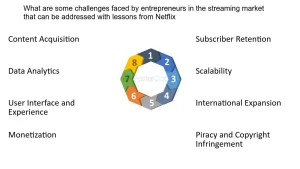The emergence of streaming services has revolutionized the way we consume media, fundamentally changing the entertainment landscape. This shift has affected not only how audiences access content but also how creators produce and distribute it. Here’s an in-depth look at the rise of streaming services and their impact on the industry and viewers.
Key Developments in Streaming Services
1. Growth of Major Platforms
- Netflix: Launched in 1997 as a DVD rental service, Netflix transformed into a streaming giant in the early 2000s, investing heavily in original content.
- Amazon Prime Video: Expanded from a retail service to include streaming, offering both licensed content and original programming.
- Disney+: Launched in 2019, Disney+ quickly gained millions of subscribers by leveraging its extensive library of beloved franchises, including Marvel, Star Wars, and Pixar.
- HBO Max: Combining HBO’s acclaimed programming with new content, HBO Max has positioned itself as a premium streaming option.
2. Emergence of Niche Services
- Platforms like Shudder (horror), Crunchyroll (anime), and BritBox (British television) cater to specific audiences, allowing viewers to find content tailored to their interests.
3. International Expansion
- Streaming services are increasingly global, with platforms developing localized content to appeal to diverse audiences. This includes Netflix’s investment in international productions, such as Money Heist from Spain.
Impact on the Entertainment Industry

1. Content Creation and Distribution
- Shift in Production Models: Traditional networks and studios are now competing with streaming platforms, leading to a surge in original content production.
- Diverse Storytelling: Streaming services often prioritize diverse narratives and underrepresented voices, enabling a broader range of stories to reach audiences.
2. Changing Viewing Habits
- Binge-Watching Culture: The release of entire seasons at once has changed how viewers consume content, leading to binge-watching becoming a common practice.
- On-Demand Access: Viewers appreciate the flexibility to watch shows and movies at their convenience, leading to a decline in traditional cable subscriptions.
3. Economic Implications
- Subscription Models: The subscription-based model provides a steady revenue stream for platforms, but it also intensifies competition for subscriber retention.
- Impact on Advertising: Streaming services with ad-supported tiers are changing the advertising landscape, offering targeted ad placements based on viewer data.
Challenges Faced by Streaming Services

1. Content Saturation
- The sheer volume of content available can overwhelm viewers, leading to decision fatigue and difficulties in finding quality programming.
2. Intense Competition
- As more platforms emerge, competition for exclusive content and subscriber loyalty has intensified, forcing companies to continuously innovate and invest heavily in original programming.
3. Regulatory Concerns
- Streaming services face varying regulations in different regions, particularly regarding content licensing, data privacy, and taxation.
4. Piracy and Copyright Issues
- The rise of streaming has also led to increased concerns about piracy and the protection of intellectual property, prompting platforms to invest in security measures.
The Future of Streaming Services

1. Hybrid Models
- Many platforms are exploring hybrid models that combine subscription services with ad-supported tiers, allowing for greater flexibility in pricing and content access.
2. Enhanced User Experience
- Innovations in user interface design, personalized recommendations, and interactive content (like Netflix’s Bandersnatch) are likely to shape the future viewing experience.
3. Global Content Production
- The international production of content will continue to rise, with streaming services investing in local talent to create culturally resonant programming.
4. Technological Advancements
- Advances in streaming technology, such as higher resolution formats (4K, HDR) and improved bandwidth capabilities, will enhance the viewing experience.
Conclusion
The rise of streaming services has profoundly transformed the entertainment industry, reshaping how content is created, distributed, and consumed. As audiences embrace on-demand viewing, the competition among platforms continues to drive innovation and diversity in storytelling. While challenges remain, the future of streaming looks bright, with opportunities for growth and evolution in an ever-changing media landscape.


